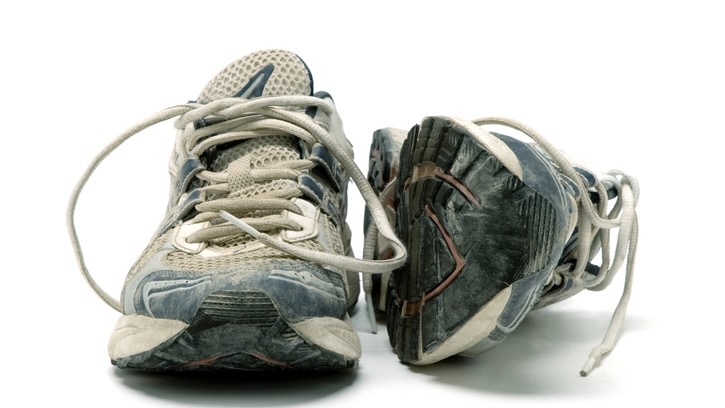Help! I have a stress fracture from running
What causes the common runner's injury, how to avoid stress fractures from running, and what treatments are available?

Any running injury, whether it’s a blister, torn muscle, sprain ankle or shin splints, is a concern, but a stress fracture is the one injury that no runner wants to suffer. It is usually a painful injury and it can come from nowhere, or seemingly so.
Another issue with a stress fracture is that it can take time and patience before it has healed enough to continue your usual running routine. However, let’s find out the cause, what you can do to hopefully avoid the injury, what to do if you suffer a stress fracture and also look at some of the best treatments.
What is a stress fracture from running?
A stress fracture describes an injury where there is a tiny crack (fracture) in the bone. A stress fracture can also manifest itself as severe bruising of a bone.
Most stress fractures for runners will be in the leg bones, but it can also strike the hip and pelvis.
The biggest reason for a stress fracture is tired or over-used muscles. When fatigued muscles are unable to absorb the natural stress of running, the overload then transfers to the bones. When the bones become stressed they can end up with small fractures.
The stress is a reaction to overload and the injury occurs when the bone starts to swell inside. If you ignore the first warning signs of a stress fracture, it’s highly likely the symptoms will worsen and it will become a much more serious fracture.
Common places for stress fracture to occur in runners are the feet, especially the second and third metatarsal bones. This is because these bones are usually thinner than the first metatarsal and this is an area of the foot that has a lot of impact from running.
All the latest inspiration, tips and guides to help you plan your next Advnture!
Other common bones where stress fractures can strike are in the mid-foot, heel and ankle.
The tibia, thigh, hip and pelvis bones can also be problematic areas for runners.

Why have I got a stress fracture?
The most common reason for a stress fractures, especially among runners, is over- use. This type of fracture is different from the one that occurs when you fall and fracture or break a bone.
Stress fractures develop over time and they are usually the result of a repetitive force. Running is a repetitive activity and it naturally causes microscopic damage to muscles and bones. However, if this microscopic damage (or tears) are not given sufficient time to repair, they can end up becoming a small but painful fracture.
Doing too much running without carefully building up or over-doing the type of running can lead to stress features in the bones.
The bottom line is that stress fractures are commonly the result of doing too much, too soon and not allowing the body time to adapt.

Age and menopause
As we age, our bone density and muscles naturally become weaker or less robust. For women, the peri-menopause and menopause years can exacerbate this issue. A reduction in the hormone oestrogen that comes with the menopause can lead to osteoporosis (brittle bones).
While running is considered to be a good way to maintain denser muscles and bones, we also need to give our bodies time to recover.
Older runners, or female runners going through menopause or post menopause, should allow more recovery time in between impact activities, such as running. This allows the muscles and bones to naturally heal and recover as stronger rather than forcing them to work hard again too soon.
Winter worries for stress fractures
It’s claimed that stress fractures are more likely in winter. This could be that a lack of sunshine and daylight has lead to a Vitamin D reduction. This is a crucial vitamin for strong bones.
Research has also shown that women are more prone to stress fractures if they have a low BMI and irregular periods.
Running style – and stress fractures
Assessing your running gait can give clues to the people who are more likely to suffer a stress fracture. For example, it’s been shown that runners who stretch out their stride, or over-stride, and therefore heel strike, are more prone to tibial stress fractures.
However, forefoot strike can also increase the landing force on the bones of the foot and ankle, so this might not be your chosen running gait either.
In addition, if you change too quickly to a more minimalist or barefoot running shoe, this can lead to steps fractures in the bones of the foot or ankle.
Another issue can come for runners who over-pronate. This can cause more medial overload on legs and therefore a greater chance of stress fractures.
Health & diet affects on stress fractures
As well as low levels of Vitamin D being an issue, runners should take care to ensure they have adequate calcium levels. Too much caffeine and salt have also been linked to a higher potential for stress fractures.

Look at your running footwear
If your favourite running footwear is old or a bit worn, this could lead to less cushioning and therefore a higher chance of stress fractures.
Also, it’s worth thinking about the footwear that you are using for different terrains. The best trail running footwear and road running shoes are designed to cope with different stresses and you should make sure you choose the right running footwear for the type of terrain you run the most miles on.
How do I know if I have a stress fracture?
You will usually become aware of pain when you are running. If it is a stress fracture, it will be a sharp type of pain.
The pain is likely to get worse the longer and further that you run.
The pain will normally feel like it’s in boney area and if you touch that area it can feel sore and tender.
The worse the stress fracture becomes, the more you will feel the pain – and even when resting.
Swelling can be another indicator of a stress factor. This will be especially noticeable on the top of the foot if you have a stress fracture in the foot bones.
How to treat stress fractures caused by running
The bottom line is that stress fractures are unlikely to get better if you keep on running, or you continue to wear old footwear.
The best approach is to see a sports therapist or a doctor as soon as you can. Also Rest, Ice, Compress and Elevate (RICE) the affected leg/ area.
It may be that a medical expert will use an X-ray or MRI to ascertain the degree of the stress fracture.
If the stress fracture is particularly acute, a splint might be used to support the injury. In the worst cases, surgery may be needed to insert a pin, screw of plate as a larger measure of support for the damaged bone.
But most experts agree that rest if the most important treatment for stress fractures. Complete rest from running for four to eight weeks will allow the fractures to heal and after this you can start back with your running but make sure the build up is careful and progressive.
Tips for runners: how to avoid stress fractures
The best advice for runners is to aim to avoid stress fractures in the first place. Here are some top tips:
- Follow a sensible trail running plan
- Build up carefully to greater mileages or to increase pace
- Take adequate rest between runs to allow the body to rest
- Eat a healthy and balanced diet with attention to Vitamin D and calcium
- Older runners and women in the menopause or post-menopause should be very careful to rest and recover between running sessions
- Change your running footwear when it starts to wear out
- Don’t suddenly change your gait – if you plan to try a longer or shorter stride, do so progressively
- Pay attention to general strength and conditioning to ensure your body is fit for running.
A stress fracture from running can put on you on the sidelines for weeks and it can be a painful injury. Avoidance is the best approach but if you do end up with a fracture, make sure you attend to it sooner rather than later. It is unlikely to go away of its own accord, and adequate rest will be the best route to healing.

Fiona Russell is a widely published adventure journalist and blogger, better known as Fiona Outdoors. She is based in Scotland and is an all-round outdoors enthusiast with favorite activities including trail running, mountain walking, mountain biking, road cycling, triathlon and skiing (both downhill and backcountry). Aside from her own adventures, Fiona's biggest aim is to inspire others to enjoy getting outside and exploring, especially through her writing. She is also rarely seen without a running skort! Find out more at Fiona Outdoors.
